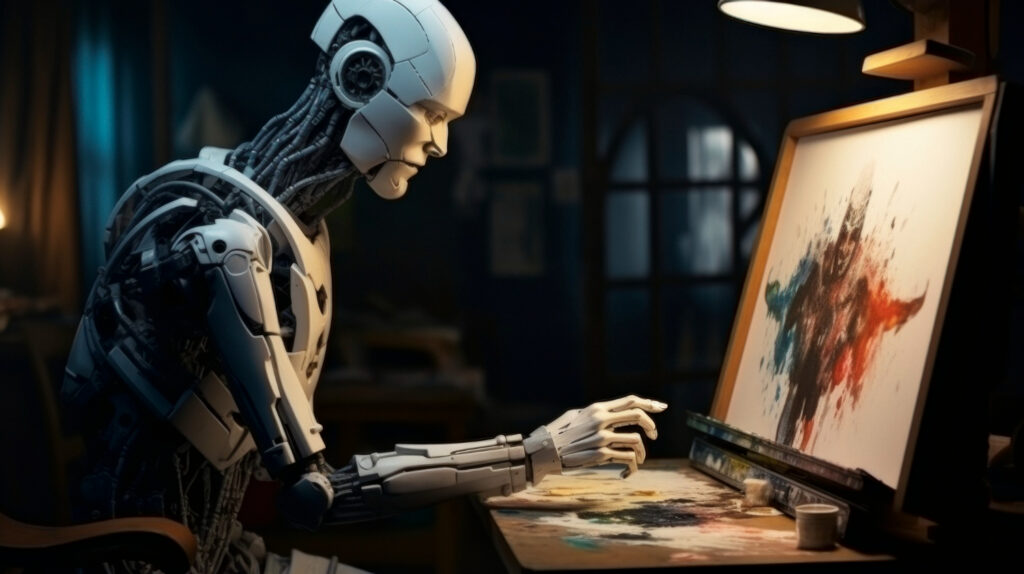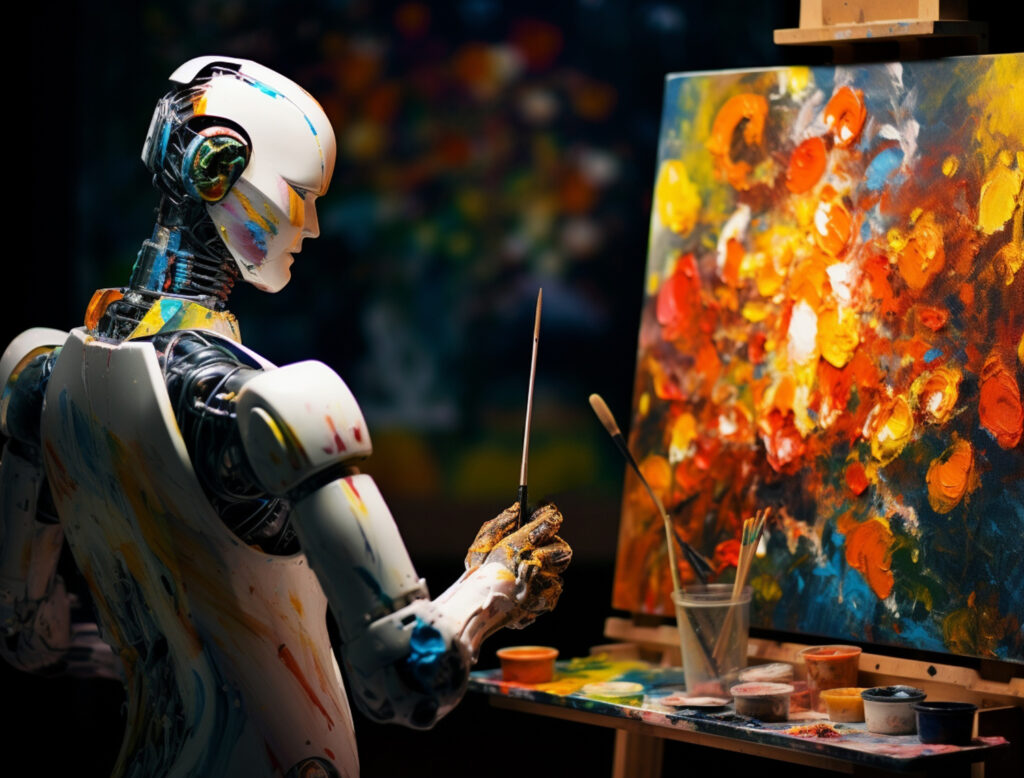Artificial intelligence is rapidly transforming industries once considered purely manual, and painting is no exception. Both residential and commercial painting are being reshaped by intelligent tools that merge craftsmanship with computation. From predictive color design to automated application systems, AI is improving accuracy, speed, and customization in ways that were unimaginable a decade ago. The paintbrush and roller are no longer the only instruments of precision—data and algorithms are now part of the palette.
The Rise of AI in the Painting Industry
AI first entered the painting field through digital color analysis and visualization, but its role has since expanded dramatically. Modern systems can now assess lighting conditions, detect imperfections, calculate optimal paint volumes, and even predict surface reactions before work begins. What was once a craft driven solely by human intuition is now enhanced by measurable precision.
In both homes and large commercial projects, this transformation means fewer errors, less waste, and more consistent finishes. AI assists contractors and designers in creating spaces that are not only aesthetically pleasing but scientifically optimized for durability and performance. As the technology matures, painting is becoming more predictive, data-driven, and environmentally conscious.
Intelligent Color Selection and Design Optimization
Choosing a color has always been a balance of emotion and experience, but AI is making it a data-informed process. Algorithms can now analyze environmental light, existing furniture, and even psychological preferences to recommend shades that suit both mood and function. These systems learn from patterns across thousands of designs, predicting which tones work best in certain contexts—such as productivity-enhancing colors for offices or calming hues for bedrooms.
Homeowners can preview these choices through augmented reality apps that show exactly how a shade will appear under real lighting conditions. In commercial settings, AI tools allow designers to create entire building color schemes that balance branding, energy efficiency, and long-term maintenance needs. The result is design intelligence that transforms subjectivity into measurable success.
AI-Powered Surface Analysis and Preparation
Surface preparation is the foundation of any successful paint job, and it’s an area where AI excels. Using machine vision, AI-enabled scanners can inspect walls, detect cracks or uneven textures, and recommend corrective treatments before painting begins. These systems analyze minute variations that may not be visible to the human eye, ensuring every coat adheres perfectly.

For large-scale projects such as offices or industrial spaces, AI-based drones can conduct detailed inspections of exterior walls or ceilings. They generate 3D surface maps and identify areas needing special attention, improving safety and reducing time spent on manual scaffolding. This precision-oriented approach ensures a flawless base for the layers that follow.
Automation and Robotic Application
Robotics are taking painting efficiency to new heights. AI-guided robots equipped with sensors and sprayers can now perform consistent, uniform coatings on surfaces of varying shapes and sizes. They adjust spray pressure, angle, and distance in real time based on surface feedback. In residential projects, these systems can handle ceilings, exteriors, and hard-to-reach spaces with exceptional accuracy.
For commercial and industrial painting, robotic automation reduces downtime and eliminates human exposure to hazardous environments. The machines can work continuously and predict maintenance schedules through performance tracking. Rather than replacing painters, this technology complements them—handling the repetitive and high-risk tasks so human experts can focus on quality control and artistic detailing.
Predictive Maintenance and Long-Term Care
AI’s most transformative role might be in predictive maintenance. Smart sensors integrated into coatings or building systems can monitor humidity, temperature, and paint condition over time. By analyzing this data, AI can forecast when repainting or touch-ups will be required, preventing costly deterioration.
For business facilities, predictive maintenance translates into budget efficiency and uninterrupted operation. For homeowners, it ensures lasting beauty and protection without frequent intervention. This data-driven approach extends paint lifespan, supports sustainability goals, and shifts painting from a reactive process to a proactive one.
Sustainable Formulations and Eco-Friendly Practices
Artificial intelligence is also helping develop paints that are safer for both people and the planet. Through machine learning, researchers can model chemical interactions to design low-VOC, biodegradable, and longer-lasting formulations. AI helps predict how pigments and binders behave in different climates, leading to smarter product development.

For painters, this means using materials that deliver high performance with minimal environmental impact. Automated systems can calculate the precise quantity of paint needed, reducing leftover waste. By merging digital precision with green chemistry, AI is enabling a future where quality and sustainability coexist effortlessly.
Smart Color Matching and Consistency Control
Color matching has long been one of the biggest challenges in painting. Even small deviations can ruin the aesthetic of an entire project. AI-driven scanners and spectrophotometers can now analyze any surface and replicate its color to near-perfect accuracy. These systems learn from data libraries that include millions of shades, ensuring seamless consistency across rooms or entire buildings.
Commercial painters especially benefit from this level of control, as brand identity often depends on strict color accuracy. AI ensures that every coat looks identical, whether applied today or a year from now. By integrating these tools into mobile devices, painters can achieve flawless uniformity with just a scan and a tap.
Virtual Planning and Augmented Reality in Painting
The integration of AI with augmented reality has revolutionized how clients experience color before committing. Designers and contractors can upload a room or building image and apply virtual paint with real-world accuracy. These systems simulate texture, lighting, and material reflection, offering a preview that traditional swatches could never provide.
For residential clients, this creates confidence and creativity in decision-making. For commercial clients, it speeds up approval processes and minimizes costly revisions. Virtual design powered by AI eliminates uncertainty, making the painting process both more transparent and collaborative.
AI-Enhanced Quality Assurance
Even after the paint is applied, AI continues to ensure precision. Computer vision systems can inspect walls for uniformity, thickness, and defects, comparing real results to digital standards. These tools detect micro-variations invisible to the human eye, guaranteeing the professional finish that clients expect.
Painters can use handheld scanners or drones to validate results in real time, receiving feedback that improves future performance. This digital quality control raises industry standards by combining artistry with analytical validation, ensuring that every project meets measurable benchmarks of excellence.
The Evolving Role of Painters and Contractors
AI is not eliminating the need for skilled painters—it’s redefining their expertise. The painter of the future will need to understand not only brushes and rollers but also sensors, software, and data interpretation. This new skill set will create professionals who are both artisans and technicians, blending creativity with precision.

For contractors, AI-driven tools streamline management, scheduling, and cost estimation. Digital platforms can analyze project scope, calculate timelines, and optimize resource allocation automatically. The result is a more efficient workflow where decision-making is informed by data and outcomes are consistently high-quality.
The Future of AI-Driven Painting
As artificial intelligence continues to evolve, the possibilities for innovation in painting are nearly limitless. Imagine coatings that adapt to changing temperatures, walls that monitor air quality, or paints that adjust hue based on mood and lighting. These concepts are no longer distant ideas—they’re active research areas powered by AI.
In both residential and commercial settings, the intersection of technology and artistry is creating an entirely new standard for precision and personalization. Painting is no longer just about color—it’s about connection, efficiency, and intelligence woven into every layer. AI is turning walls into smart surfaces and transforming painters into future-focused professionals.
Conclusion: Where Technology Meets Art
Artificial intelligence has brought painting into a new era of precision and performance. From selecting the perfect color to applying the final coat, every step can now be guided by insight and automation. The blend of human creativity and machine intelligence ensures results that are more accurate, sustainable, and beautiful than ever before.
In homes, it means flawless finishes and lasting value. In businesses, it means speed, scalability, and visual harmony. The future of painting will be defined not just by color but by the intelligence that powers every stroke—a future where every coat is a masterpiece of precision, powered by AI.

Leave a Reply